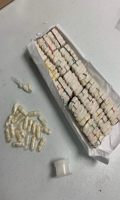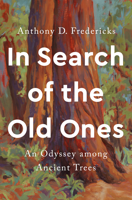Chasmanthium latifolium is one of my favorite grasses! Sea oats is the perfect grass, you can grow it in the shade, in the sun, in partial sun, in moist soil, and they can even tolerate occasional saltwater flooding. Once established, it is drought-tolerant and sea spray-tolerant. They do not even mind sand-blowing winds (particularly important for this area).
Chasmanthium can be 2 to 5 feet tall and spread 1 to 2 feet wide. Sea oats are a winter interest perennial — meaning that even in the winter they provide visual interest. They also make great cut flowers. The seed heads are completely different from other grasses. They are flat, nodding seed heads that love to be tickled by the wind. They are lime green in the spring and turn a bronze tan for fall. The plants have a structure like bamboo, without the invasiveness or overwhelming size. Their leaves start out a lime green, and in fall are the same shade as their seed heads.
Sea oats are a hardy, low-maintenance grass that can grow in just about every garden site in our area of lower Delaware. They are used for erosion control along waters edges, in shade gardens where other grasses will not survive, and even in pots. They are deer-resistant — another important characteristic in our area. You will want these grasses if you want to attract butterflies and wildlife, have cut flowers, or are putting in a cottage garden design, rain gardens and low-maintenance gardens.
Wildlife benefits:
• Host plant to caterpillars of Pepper and Salt Skipper, of Northern Pearly Eye Butterflies and several other species of Skippers
• Birds and mammals often eat seeds.
• Provides cover and nesting material for birds.
Fun facts:
• Chasmanthium latifolium can be eaten, as bread, cereal, biscuits, or ground as flour. The Cocopa Indians of Mexico use it as a food crop like we do with wheat.
Companion plants:
• Carex cherokeensis (Cherokee sedge)
• Rudbeckia fulgida v. fulgida (black-eyed Susan)
• Asclepias tuberosa (butterfly weed)
• Echinacea purpurea (purple coneflower)
• Solidago flexicaulis (zig-zag goldenrod)
• Coreopsis rosea (pink tickseed)
• Physocarpus opulifolius (ninebark)
• Monarda fistulosa (wild bergamot), and
• Schizachyrium scoparium (little bluestem).






